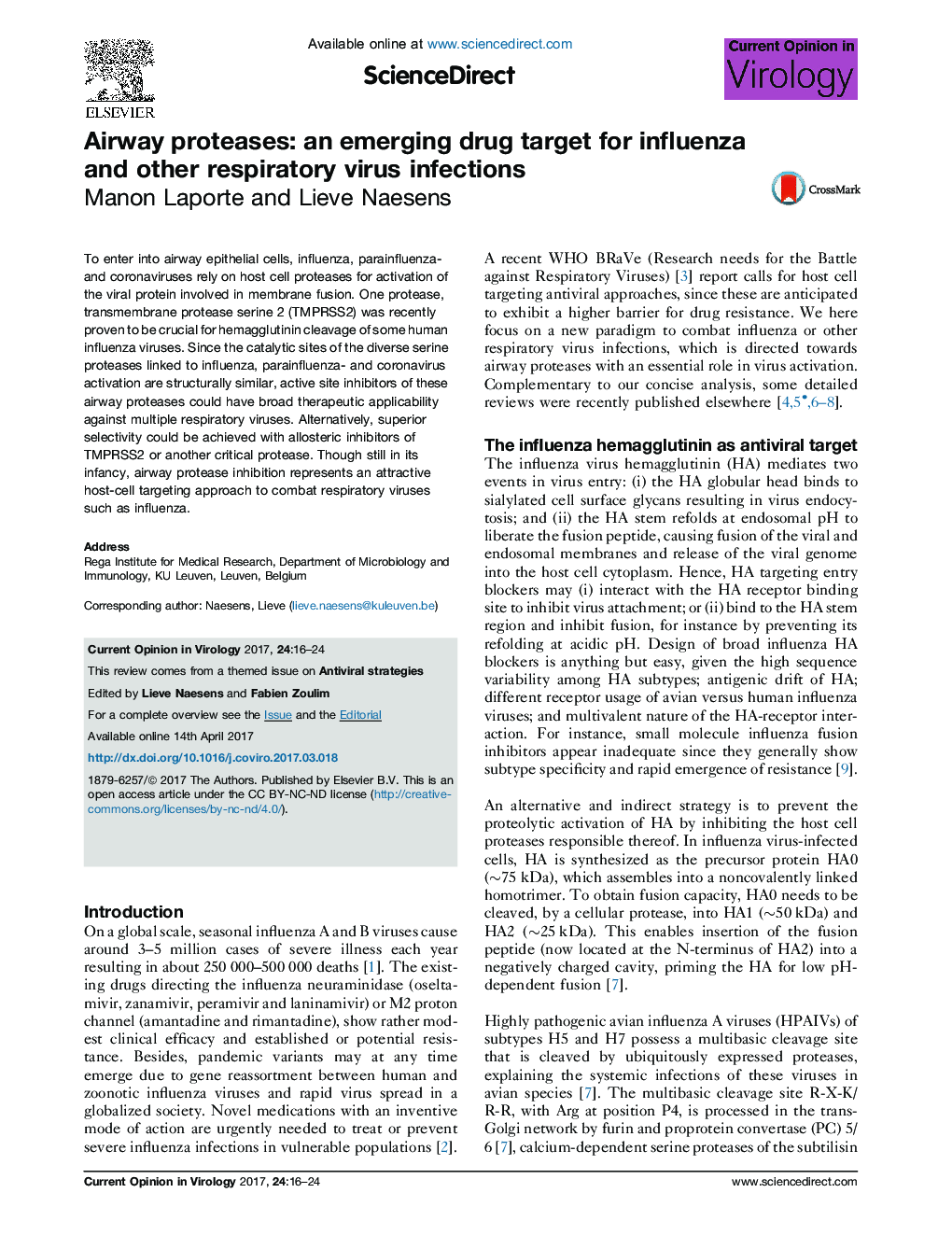| Article ID | Journal | Published Year | Pages | File Type |
|---|---|---|---|---|
| 5546209 | Current Opinion in Virology | 2017 | 9 Pages |
â¢Influenza virus replication depends on activation by airway proteases of the host.â¢One prominent enzyme, TMPRSS2, also activates some other respiratory viruses.â¢Inhibitors of these trypsin-like proteases display anti-influenza activity.â¢These agents can be either peptidomimetic active-site or exosite inhibitors.â¢This new drug concept could be broadly used against several respiratory viruses.
To enter into airway epithelial cells, influenza, parainfluenza- and coronaviruses rely on host cell proteases for activation of the viral protein involved in membrane fusion. One protease, transmembrane protease serine 2 (TMPRSS2) was recently proven to be crucial for hemagglutinin cleavage of some human influenza viruses. Since the catalytic sites of the diverse serine proteases linked to influenza, parainfluenza- and coronavirus activation are structurally similar, active site inhibitors of these airway proteases could have broad therapeutic applicability against multiple respiratory viruses. Alternatively, superior selectivity could be achieved with allosteric inhibitors of TMPRSS2 or another critical protease. Though still in its infancy, airway protease inhibition represents an attractive host-cell targeting approach to combat respiratory viruses such as influenza.
